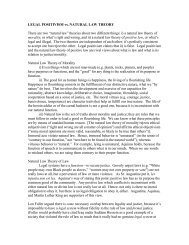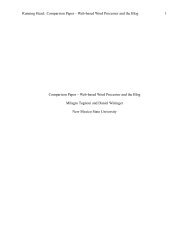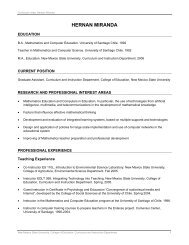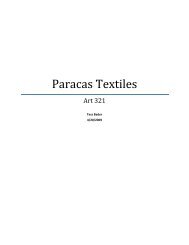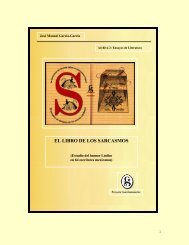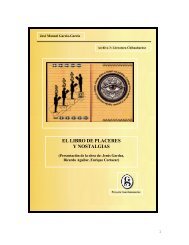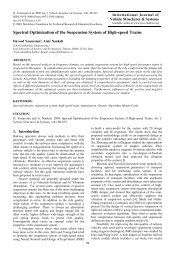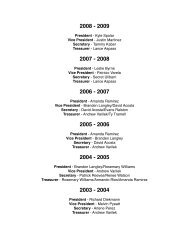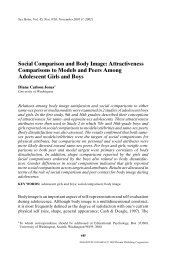The Origins of a Free Press in Prerevolutionary ... - Web Publishing
The Origins of a Free Press in Prerevolutionary ... - Web Publishing
The Origins of a Free Press in Prerevolutionary ... - Web Publishing
Create successful ePaper yourself
Turn your PDF publications into a flip-book with our unique Google optimized e-Paper software.
104<br />
While designed to be useful and enterta<strong>in</strong><strong>in</strong>g, almanacs also were an<br />
<strong>in</strong>expensive way <strong>of</strong> <strong>in</strong>troduc<strong>in</strong>g pla<strong>in</strong> folks to the world <strong>of</strong> letters: “ ‘almanacks,’<br />
sell<strong>in</strong>g for a few pennies, found their way <strong>in</strong>to practically every household” even<br />
those <strong>of</strong> the poor and illiterate. 17 <strong>The</strong> price <strong>in</strong> Virg<strong>in</strong>ia and Maryland <strong>of</strong> seven-and-<br />
a-half pence to “Eight Coppers” each was low enough that virtually every family <strong>of</strong><br />
European descent could afford an almanac. Historian Susan Stromei Berg<br />
suggested that <strong>in</strong> eighteenth-century Virg<strong>in</strong>ia, “Everyone had to have one.” 18 <strong>The</strong><br />
records <strong>of</strong> the Williamsburg pr<strong>in</strong>ters allow us to estimate the number <strong>of</strong> almanacs<br />
that were sold and paid for <strong>in</strong> 1751 at between 2,000 and 3,400, and <strong>in</strong> 1764,<br />
between 3,000 and 5,000 copies. 19 Other estimates run as high as 5,000 issues<br />
pr<strong>in</strong>ted each year for a Virg<strong>in</strong>ia population <strong>of</strong> about 130,000 <strong>of</strong> European descent,<br />
or about one almanac for every 26 white people. 20 All <strong>of</strong> these estimates ignore the<br />
fact that most local almanacs were aimed at a wider audience than just one colony.<br />
For example, the later Virg<strong>in</strong>ia almanacs <strong>in</strong>dicated on the front cover, “Fitt<strong>in</strong>g<br />
17 Schles<strong>in</strong>ger, Prelude to Independence, 41.<br />
18 “Eight Coppers” from <strong>The</strong> Maryland Almanack … 1762 (Annapolis: William Parks, 1761).<br />
Many advertisements <strong>in</strong> the newspapers, <strong>in</strong>clud<strong>in</strong>g the Virg<strong>in</strong>ia Gazette (Williamsburg: Hunter,<br />
Jan. 2, 1756), 4, or Bear, Checklist <strong>of</strong> Virg<strong>in</strong>ia Almanacs, x, listed seven and a half pence as the price.<br />
“Everyone” quotation from Berg, Eighteenth Century Williamsburg <strong>Press</strong>, 32-34.<br />
19 <strong>The</strong> price listed <strong>in</strong> Virg<strong>in</strong>ia Gazette, (Hunter, Jan. 30, 1752), 4, advertisement states the<br />
Virg<strong>in</strong>ia Almanack price at 7½ pennies retail, 5 shill<strong>in</strong>gs per dozen wholesale (or 5 pennies each),<br />
Hunter, Pr<strong>in</strong>t<strong>in</strong>g Office Journal, lists total almanac sales for 1751 at £70.6.6½. See also, Berg,<br />
Eighteenth Century Williamsburg <strong>Press</strong>, 32-34. Royle and Purdie, Pr<strong>in</strong>t<strong>in</strong>g Office Journal, vol. 2,<br />
1764-1766, lists £75 credit only almanac sales for 1764. Stiverson, <strong>in</strong> “Colonial Retail Book<br />
Trade,” <strong>in</strong> Joyce, Pr<strong>in</strong>t<strong>in</strong>g and Society <strong>in</strong> Early America, 157-9, estimated that if the ratio <strong>of</strong> credit<br />
to cash sales were constant, about 5,000 almanacs were pr<strong>in</strong>ted <strong>in</strong> 1764 and 1765. Constant<br />
newspaper ads request<strong>in</strong>g payment <strong>in</strong>dicated the pr<strong>in</strong>ters were <strong>of</strong>ten not paid for their work, so<br />
actual distribution is likely much higher, when almanacs not paid for are <strong>in</strong>cluded.<br />
20 Berg, Eighteenth Century Williamsburg <strong>Press</strong>, 32-34. Stiverson, “Colonial Book Trade,” 59-<br />
74. Population estimates from Historical Statistics <strong>of</strong> the United States, Colonial Times to 1970,<br />
2:1168. Numbers derived from British colonial <strong>of</strong>fice records. <strong>The</strong> use <strong>of</strong> “white” population only<br />
is necessitated by the population estimates <strong>of</strong> the time, which did not <strong>of</strong>ten <strong>in</strong>clude Native<br />
Americans or slaves. <strong>The</strong>re is no <strong>in</strong>dication that the black population <strong>of</strong> Virg<strong>in</strong>ia, primarily slave,<br />
had any substantial literacy rate by this period.



